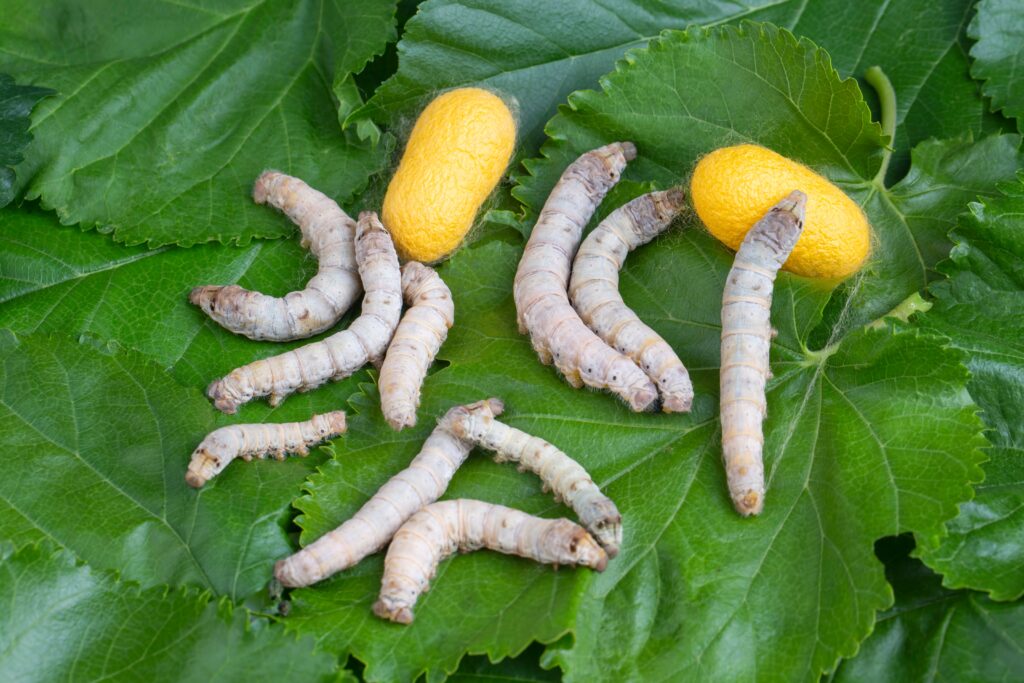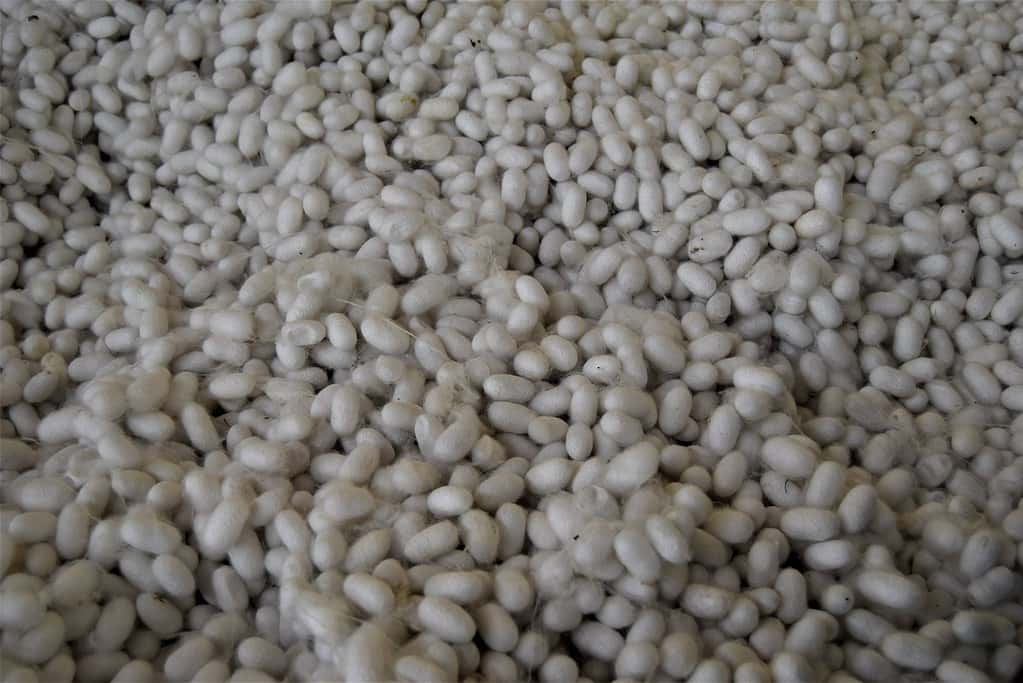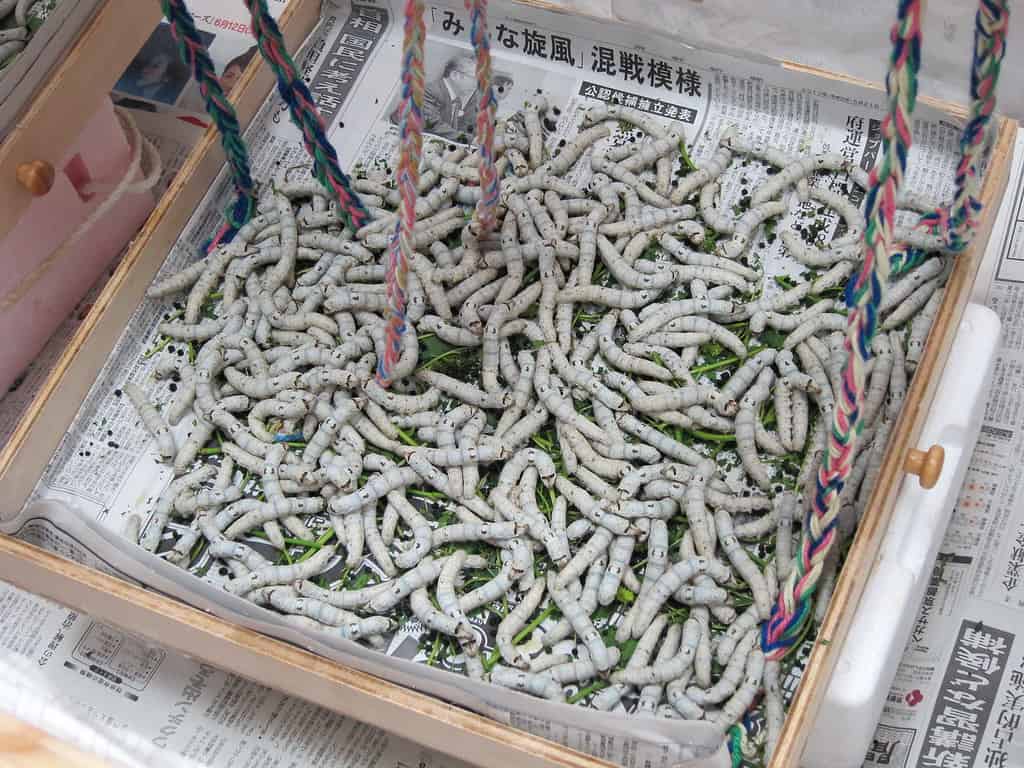The only reason that anyone can buy silk shirts or pajamas is due to a practice called sericulture. Sericulture, or silk farming, involves the harvest of silk from silkworms. The demand for high-quality silk is unwavering, allowing China and India to offer 60% of all silk worldwide. Let’s look at this farming process to learn about where this refined material comes from.
See How a Japanese Silk Farm Works
What Are Silkworms?

Silkworms come from eggs, though they usually never reach adulthood.
©Esin Deniz/Shutterstock.com
Silkworms are the larva stage of the Bombyx mori moth. They are necessary to the economy as the main producer of silk and rely on humans. Their silk is one of the biggest trades in the world, and it is used to create many different products. Though they are essential to trading, they aren’t necessary to the local environment.
How to Make Silk With Silkworms

Silkworms create a tight cocoon from a single strand of silk, giving it the familiar smooth texture that silk is known for.
Silk farmers need many cocoons to produce silk. Creating 1 pound of silk takes at least 2,000 cocoons. Each of these cocoons has 1,000+ feet of a singular silk thread. During the harvesting process, silk farmers boil silkworms. The hatching process greatly damages silk strands because the caterpillar chews through it.
Instead of disposing of silkworms, some farmers allow them to be sold as food. In India, silk farmers use a method that allows the caterpillar to reach adulthood first. The farmers cut a spot in the cocoon to get through. While the silk is a little rougher, this method humanely protects the insect responsible for making it.
Silkworms In Captivity: A Lifelong Habitat

The sericulture process involves removing the silkworms from the cocoon by boiling them, allowing the silk to unravel.
While silkworms used to have a home in the wild, their long-term cultivation means they can no longer survive. This evolution comes from genetic alterations through years of breeding. China started using these worms 5,000 years ago, though it used to be a major secret. Their genetics changed drastically through the breeding and farming of silk, and the only way to support this larva was in a manmade habitat. They need to maintain a temperature of 18 and 25 °C.
How Big Does a Silkworm Get?

While it is up to the silk farmer to decide how big to let silkworms grow, they only grow to an inch or two into adulthood.
Since every silkworm grows in captivity, it is up to the breeder to decide how long they will let it continue to grow up to 3 inches. Though they can’t fly, their wings are about 2 inches wide. Their diet is minimal, making them easy to raise.
The photo featured at the top of this post is © Deborah Lee Rossiter/Shutterstock.com
Thank you for reading! Have some feedback for us? Contact the AZ Animals editorial team.







